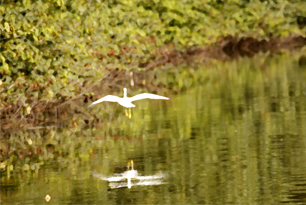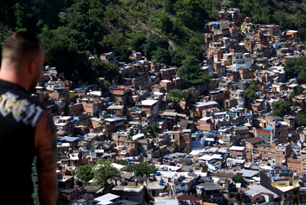How to get to Rio de Janeiro:
Several Airlines fly to Rio from outside of Brazil. Here is a list:
Aerolineas Argentinas / AeroMexico / Air Canada / Air France / Alitalia / American Airlines / Avianca / British Airways / Copa Airlines / Delta Airlines / Emirates / Iberia / KLM / Lan Chile / Lufthansa / TAAG / TACA Peru / TAP / United Airlines.
And Brazilian Companies TAM and Gol.
And Rio has direct connections with most, if not all, of the cities that are reached by International Flights, so even if you are not flying to Rio directly you are very likely just one connection away.
Location:
Rio is located in the Southeast of Brazil in the State of the same name. As Rio is connected by a direct flight to most touristic cities, you can bundle it with basically any city. Rio is within a 2:30 hours away from Búzios and 4:00 hours away from Paraty. A Couple of nearby Gems that you can either go for the day or for a weekend.
What to See:
Rio is one of the most beautiful cities in the world. Its most famous landmark is the Christ Redeemer Statue, recently voted as one of the 7 new wonders of the world. The statue of Christ with arms wide open is to many, the symbol of Brazil. But the Marvelous city, as Rio is also known, offers a wide variety of additional options, such as the Sugar Loaf mountain sitting in Guanabara Bay, which allows for other equally exciting views of the city below, to rival those that you get from the top of the Corcovado Mountain where the Christ the Redeemer Statue stands.
If you are looking to spend a day surrounded by nature, one very good option is the Botanical Garden or a ride through the Rainforest in a Jeep.
Rio is not just wonderful landscapes. It has several interesting museums. If you have free time or on a rainy day, drop by the MAR (Rio Art Museum), the CCBB (Centro Cultural Banco do Brasil) or MAM (The Museum of Modern Art) all very interesting museums.
If you are not all that much into museums and likes to immerse yourself in the culture you’re visiting, maybe a Cooking Class is also good for a rainy day.
Try to catch a show at the Municipal Theather (Theatro Municipal) you’ll be amazed by the architecture of the venue just as much as you will be by the show itself.
Brazil likes to call itself the country of Soccer. It is most famous Stadium – The Maracanã Stadium has hosted two World Cup Finals. You should visit the museum at the stadium and feel like a player, by visiting the training room, the locker room, and entering the field. Another great option is going to a match and feeling the energy of the stands when Flamengo, Vasco da gama, Fluminense or Botafogo are playing.
If you consider yourself fit, you will notice that Rio is full of huge peaks. From up there you will catch incredible views of the city. Just do not forget that you have to hike all the way up and down.
Beyond Rio, up to 2:30 hours away you can find yourself relaxing on paradisiac beaches or 1:30 hours up into the mountains in the old Imperial City where the Imperial Family used to vacation.
Carnival is once a year, but you can know more about it and experience it all throughout the year.
There is a Rio for everyone.
Climate and Temperature in Rio de Janeiro:
The temperatures in Rio de Janeiro are warm towards the end of spring until the end of summer – that being from November through the end of March. The average maximum temperature in those months are close to 30 Degrees Celsius or 86 Fahrenheit. But it is not unusual, except for the winter months, to get peaks of 40 Celsius or 104 Fahrenheit on some days. It rains more during this warm months, though in these last few years, it hasn’t rain as many times as the records would show.
The coldest months are May through August. But the temperatures are usually around 20 Degrees Celsius or 68 Degrees Fahrenheit, getting slightly warmer in the sunny days in around noon and a little bit chili early in the morning and during the evenings.
Rio has a lot to offer beyond its beautiful beaches. So coming in winter, might just prove to be some serious savings, as flights and hotels are cheaper.
In the months of April, September and October, the temperatures are mild. Some cool days and some warm days.
Average Minimum and Maximum Temperature Over The Year In Celsius

Average Minimum and Maximum Temperature Over The Year In Fahrenheit

Average Rainy Days

The Best time to go to Rio:
The best time to go is in late October through January, which is before high season starts through mid-high season. New Year’s is wonderful in Rio, but it’s also expensive. But then again, isn’t it expensive anywhere else as well?
Carnival or Carnaval falls on a different date every year. You should always check before booking, either to avoid it, because the city is busy and a little bit more expensive, or because you want to be a part of it.
If you are not the lay down in the beach type, then April through September should be just fine.
You just have to pick the date based on what you like doing and how your relationship with temperatures is.
What to try from Rio de Janeiro's local cuisine:
Churrasco – A Barbecue with several different cuts of grilled meat (that being, mostly beef, but with also options of pork and chicken) served by waiters with the skewers, slicing as many slices as you feel like it. Along with it, you have several options of sides as well as options of Fish, Salads and Pasta and in some Churrascarias you even get Japanese and Seafood. In the best Churrascarias, you can leave satisfied even if you don’t eat meat.
Feijoada – A typical dish of former Portuguese colonies, Feijoada consists of a stew of beans with pork and beef. It is normally served along with rice, cole, orange slices and farofa (fried mandioc flower)
General Information:
Local Time is UCT/GMT – 3.
Currency is the same all over Brazil - BRL – R$ - Brazilian Reais. Pronounced as Re-eyes (plural) or Re-owl (singular). No establishment accepts payment in any currency other than BRL.
Tap water is not drinkable. You should only drink bottled water. That is what you’ll be served when you ask for “water” anywhere you go.



